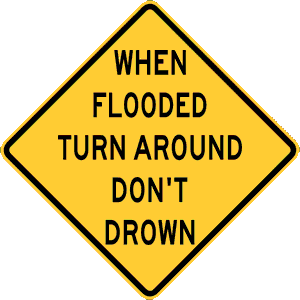Hurricane Safety Tips for Motorists
- Tips are included below the video.

- How do I know which roads to take if I need to evacuate?
- Most evacuation routes are marked with circular blue signs that read “Evacuation Route.” The signs are typically posted along interstates and major highways in the state’s coastal region. These routes were selected, because they can accommodate heavy traffic volumes and have higher speed limits. They also provide direct paths to areas not usually affected by hurricanes where food, water and shelter would be available.By following the posted evacuation routes, you can leave threatened areas more quickly and efficiently than on local roads. You can find the evacuation route nearest you on the NCDOT Hurricane Evacuation Routes map.If you are uncertain about safety of the route you should take, call 511, North Carolina’s toll-free traveler information line, at any time for updates on road conditions and closures. The latest travel details will also be posted on permanent and portable message boards along the evacuation routes, highway advisory radios and TIMS, the N.C. Department of Transportation’s Traveler Information Management System Web site.Why should I take these designated routes and not the back roads I’m more familiar with?It all boils down to resources. Emergency responders cannot be everywhere at once. Law enforcement officers, NCDOT’s Incident Management Assistance Patrols and other personnel are typically positioned along the major evacuation routes to help motorists. If you stray from these routes, you could risk getting stranded or lost – two things you definitely want to avoid during a hurricane.
I’m worried about getting stuck in traffic back ups. What kinds of essential items should I pack in the car before I evacuate?
Fuel is an important asset to have during an evacuation. If possible, fill your vehicle’s gas tank before you leave. Also, bring plenty of water and non-perishable snacks on the trip, because grocery stores and restaurants may not be open. Another helpful resource is a small, plastic bag for trash. Remember, any litter you throw outside becomes flying debris during a hurricane.
If you do happen to run out of gas or experience car trouble while evacuating, move your vehicle safely to the shoulder of the road to reduce unnecessary congestion. During a major evacuation, NCDOT’s goal is to have IMAP available to help keep lanes clear and traffic moving.
Once I start driving, what should I watch out for?
Many things. Hurricanes are incredibly powerful storms that are capable of uprooting trees, washing out bridges and culverts, and littering the roadways with debris. They may also knock down power lines and cause outages.
That is why it is best not to drive during or right after a hurricane. If you must drive, be sure to use extreme caution. If you approach any of these hazards, turn around immediately and drive to a safer place.
There is some water flowing down my street, but the news says the main roads are clear. I need to check on my family. Should I drive through it?
Absolutely not. Moving water can be extremely dangerous, even if it is shallow. It is powerful enough to push a car off the road and strand its passengers within minutes. You also cannot be sure exactly how deep the water is or what is lying beneath its surface. It could be concealing a large sinkhole or piece of debris, both of which could seriously hurt you and damage your vehicle.
Play it safe, instead. Wait for the water to recede before you drive.
